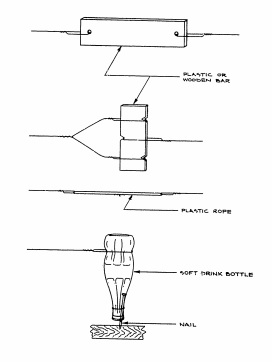In 1973, the Defense Civil Preparedness Agency was grappling with the issue of how to keep broadcast stations on the air after a disaster, presumably up to and including nuclear war. It was recognized that a station’s weakest link was its antenna. While most antennas are designed to survive normal environmental disturbances, they are the most exposed element of a station and could be destroyed by extreme disturbances. Therefore, the agency commissioned a study on the subject, the final report of which is available online.
In the report, the engineers propose that expedient antenna kits be supplied to stations, and proposed instructions are included. The report proposed kits for both AM and FM stations, along with instructions for station personnel to deploy them. The cost of the expedient AM antenna kit, a quarter-wave horizontal wire, would be $425.37. The expedient FM antenna kit would be about $1000. Both antennas would require installation at the station, prior to the disaster, the necessary utility poles that would support the antennas.
Recognizing, however, that the government might not want to bear this expense, the report also includes instructions for station personnel to construct an AM antenna using available materials. Once again, the recommended antenna is a horizontal wire, either the length of the destroyed tower or a quarter wavelength. The diagram of the recommended antenna is shown above.
Ideally, the feed point of the emergency antenna would be at the base of the fallen tower, but other options are discussed. A last resort, if the feed line were destroyed, would be to put the feed point of the antenna directly at the transmitter. The instructions caution that “it is possible to construct a transmission line, but don’t try. The performance of an antenna fed at a transmitter without a good ground will probably be better than the performance with a good ground and an improvised transmission line.”
These instructions also presuppose that the utility poles were never installed prior to the disaster. Instead, it advises to use “any existing structures available such as trees, buildings, and utility poles. A step ladder or even an automobile can be used if nothing else is available.”
Since antenna insulators probably aren’t on hand, the instructions suggest some possibilities, shown here, using things that might be found around the radio station, such as the soft drink bottle.
The main idea was to get back on the air as soon as possible. “Time is more important than radiated power, so an inefficient operation in 15 minutes is better than full power in two hours.”



Pingback: Civil Defense Postattack Broadcast Planning: 1963 | OneTubeRadio.com